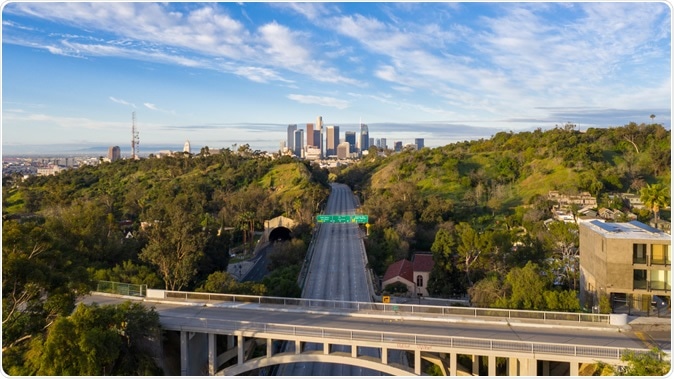A recent theory suggesting that severe acute respiratory syndrome coronavirus 2 (SARS-CoV-2) was doing the rounds in California as early as November 2019, infecting thousands undetected and leading to herd immunity, was debunked by experts from the scientific community. Antibody testing by a group of Stanford Medicine researchers was linked to the theory.
Victor Davis Hanson, American classicist, columnist, and military historian from Stanford's Hoover Institution (a conservative think tank) and not affiliated with Stanford Medicine's study, hypothesized that respiratory illness cases in California in the fall of 2019 could have been COVID-19 spreading undetected. Hanson suggested that what doctors were calling an "early flu season" could have been an early spread of the disease. In the absence of testing, many Californians could have had COVID-19 misdiagnosed as "flu" and developed antibody resistance. If so, herd immunity in California might be a reason for the state's lower case numbers.
However, Stanford scientists refute this hypothesis. Reporters also point to Hansen's possibly biased views on Chinese immigration into the US, and his avowed eagerness to get Americans back to normal working conditions faster.
Herd immunity is a form of indirect protection against an infectious disease that occurs when most of a population develops resistance to the disease, thus shielding the minority who are not immune to it. Hanson went on to say that if herd immunity in California could be proven, it would help policymakers take a call on restarting the economy, as people who were proven to have already had the virus could go back to work.
Researchers from Stanford Medical are currently carrying out blood tests to determine whether a person carries antibodies against SARS-CoV-2, the virus responsible for COVID-19 disease. Testing is carried out at sites in San Jose, Los Gatos, and Mountain View using an antibody test from Premier Biotech, which displays results in minutes. The researchers are looking to find out how many people have been infected – their work has nothing to do with herd immunity. Instead, it is to learn about the virus, how it infects, whether it induces immunity, how long the immunity lasts, or how long it takes to build up immunity.

Aerial view of empty freeway streets with no people in downtown Los Angeles California as result of coronavirus pandemic or COVID-19 virus outbreak and lockdown. Image Credit: Hyperlapse Media / Shutterstock
No probability, say experts
The researchers were quick to point out that tracking of the virus showed that there was virtually no proof that COVID-19 was circulating before November 2019. "There is zero probability [SARS-CoV-2] was circulating in fall 2019," tweeted Trevor Bedford, a computational biologist at Fred Hutchinson Cancer Research Center. Bedford has been tracking the novel coronavirus as it spreads and mutates.
Bedford cited a study that went back to test samples taken from "flu" cases in January and February as part of the Seattle Flu Study, which found zero positives in January 2020 from 3,600 samples and only ten positives from 3,308 samples tested in Feb 2020. He pointed out that the samples are representative of the US, and that California falls in line with the rest of the country in outbreak tracing. He also added that according to the genetic tracing of viral mutations, it could not have entered the US before January 2020.
Bedford is backed up by other scientists, including Richard Neher, who, with his team, created NextStrain, a platform that tracks genetic mutation of viruses over time. Neher says that tracking shows about "eight mutations in a 30,000-base sequence...which tells us is that the virus came from one source, not too long ago, somewhere between mid-November and early December."
Where are the casualties?
Scientists also pointed out that if the virus were indeed circulating while masked under the "severe flu season," the caseload and mortality rate would have been much higher than it was. "We would've seen New York in California," says genomic epidemiologist Allison Black, who works in Bedford's lab.
Dr. Alok Patel, a pediatrician at the University of San Francisco, weighed into the debate, "With coronavirus, we're suspecting that we would need about 50% to 60% of the population to be immune to it to achieve that herd immunity so it couldn't spread like wildfire. We would need millions and millions of Americans to actually get either infected or vaccinated to get immune to create herd immunity that's a huge number. And we'll probably have a huge number of casualties and deaths."
Which is, quite frankly, lacking in California. Rather than herd immunity, therefore, they attribute California's lower infection rates to the stringent social distancing measures that were implemented early on in the epidemic.
For their part, researchers are almost unanimous in calling for social distancing as the need of the hour in flattening the epidemic's curve and warning against misinformed decisions by the public that could lead to higher infection rates.